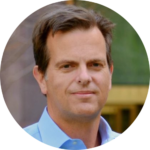
Starting new projects can be daunting, especially as an independent talent where it’s critical to demonstrate value as soon as you’re brought onboard. Whether it’s your first consulting engagement or your fiftieth, each new client and project require digging in and doing the work—making a good first impression, holding meaningful kick-off meetings, asking hard questions, and demonstrating your proposed solution.
There’s no definitive guide floating around to teach independent consultants the tips and tricks, so we sought advice from seasoned experts in the BTG marketplace. Note that each consulting engagement is different, and it’s important to fully understand the client need before applying a generic methodology or practices that don’t fit the project context. The experts below have honed their suggestions based on their specific experience and area of expertise. We offer their tips here as a starting point you should pick and choose from to find what works best for you.
Keep reading for their best on how to start a new consulting engagement on the right foot.
Meet the Experts

Ted Bissell
Data analytics and strategy expert with deep experience in digital financial services, blockchain, and machine learning

Mohammad Ghassemi
Technology and strategy expert with over 10 years of experience leading AI and data science innovation in a variety of industries

Priya Kumar
Supply chain expert with experience guiding clients to continuously extract value and efficiency by harmonizing operations

Todd Sazenski
Senior health care consultant experienced in developing and driving complex transformations and performance improvements

Steve Wunker
Innovation expert and consultant helping clients chart breakout strategies and build ongoing innovation capabilities
First Impressions Are Everything
Across the board, these experts agreed that first impressions and the initial meetings you have can make or break a new independent engagement. Forbes would agree—taking notes, asking informed questions, doing your research, listening, and showing up on time can do a lot for this professional first impression. Additionally, it’s essential to not be bound solely by the project description. Seek to become an asset to the client for the length of your engagement and watch for opportunities to suggest project extensions and repeat engagements.
Priya Kumar explained her process in becoming a team player from the start. “I connect with the client stakeholders as I would if I were employed by their organization,” she said. “This feeling of oneness goes a long way in getting stakeholders to openly collaborate throughout the life of the project.”
Ted Bissell said one should “hold a formal kickoff meeting or call, with as many project stakeholders present as possible, to agree on project methodology. Handle as many housekeeping items as possible in advance, such as the process of getting badges, IT access, expense policies, etc. This practice also gives insight into the politics of the organization and the direct client’s level of autonomy.”
Steve Wunker suggested listening before providing opinions. “Many clients are wary of consultant arrogance, so make sure you demonstrate that you really want to understand their views,” he said. “Play what you’ve heard back to people to show that you heard and to ensure that you got it right.”
Cover your bases
When working independently, it’s best to get everything you might need to know up front so you don’t have to circle back time and time again. Have a checklist or set of preliminary questions or record your initial meetings to ensure you have something to refer to. Organization is key in this regard; come to a preliminary meeting prepared to soak in all pertinent information so you leave ready to get to work.
Todd Sazenski emphasizes the importance of an early meeting with the client and key stakeholders to clarify the project needs and better understand how the work affects them. “Taking the time to learn and understand the potential issues and roadblocks going into the project makes a substantial difference,” he said.
As for Kumar, she focuses on background information before even getting to the initial meetings. “I read about the history of the company, their latest news happenings, industry trends and information about competitors,” she said. “This helps me to cultivate an educated perspective and demonstrates my commitment to understanding the client.”.
Bissell concluded by saying that it’s vital to validate project scope. “By the time the contracting process is complete, inevitably a priority has changed—and it’s essential to draw it out as early as possible,” he said.
Blend Previous Experience with a Clean Slate Approach
Experience builds expertise, and expertise is what lands you new engagements. Naturally, you’ll take what you’ve learned on previous projects and apply it to future projects as you continue to learn what works best in your field. However, avoid constant comparisons to previous work to avoid coming off as unteachable or stalwart. The great thing about being independent is that you get to change things up regularly, learn with and from new people, and hone skills in a unique way that full-time employees don’t have access to. That’s why, according to Kumar, you should approach every engagement with a clean slate mindset.
“For the first couple of weeks, I ‘forget’ every other project I’ve ever worked on,” Kumar said. “Entering into an engagement with a clean slate helps me to consciously listen to the client stakeholders. Every organization has very unique challenges, and coming up with a customized solution ensures long-term, integrable, sustainable success.”
Doing so prevents you from falling back on “what’s worked in the past” and forces you to think about what will work for this project, now.
Find your ‘Five Step Process’
Maybe yours is three, maybe it’s seven, maybe it’s fifteen—the number of steps doesn’t matter as much as developing a process that works for you with some semblance of regularity. Mohammad Ghassemi outlined the five-step process he uses for projects in the realm of data science:
- Specification
- Identification
- Development
- Communication
- Demonstration
Ghassemi explained, “It starts with a specification of exactly what the client wants. We move to an identification of what data we need in order to get to their end goal. Then we have a development phase where we sort of build out algorithms, the communication around how those algorithms work, and finally we demonstrate the value back to the client.”
He asks questions along the way to whoever will entertain them
- What’s working well?
- What are some current pain points for the organization?
- What data matters most? (Vice versa: What data do they not pay attention to?)
- Industry specific: What in their wildest dreams could technology do to help them, and what is it that technology has done that absolutely annoys them?
After having those conversations, he synthesizes the information into a single multi-page document. With this method, he is able to get people engaged and invested in the project’s success, even if they just answered a question or two.
We hope that these insights will help guide you toward finding your own way to hit the ground running on an independent engagement, no matter where you are in your career. The best place to start looking for new projects is the BTG Talent Portal. Sign up or log in to see all available project opportunities, and keep in mind that new opportunities are posted regularly.




















